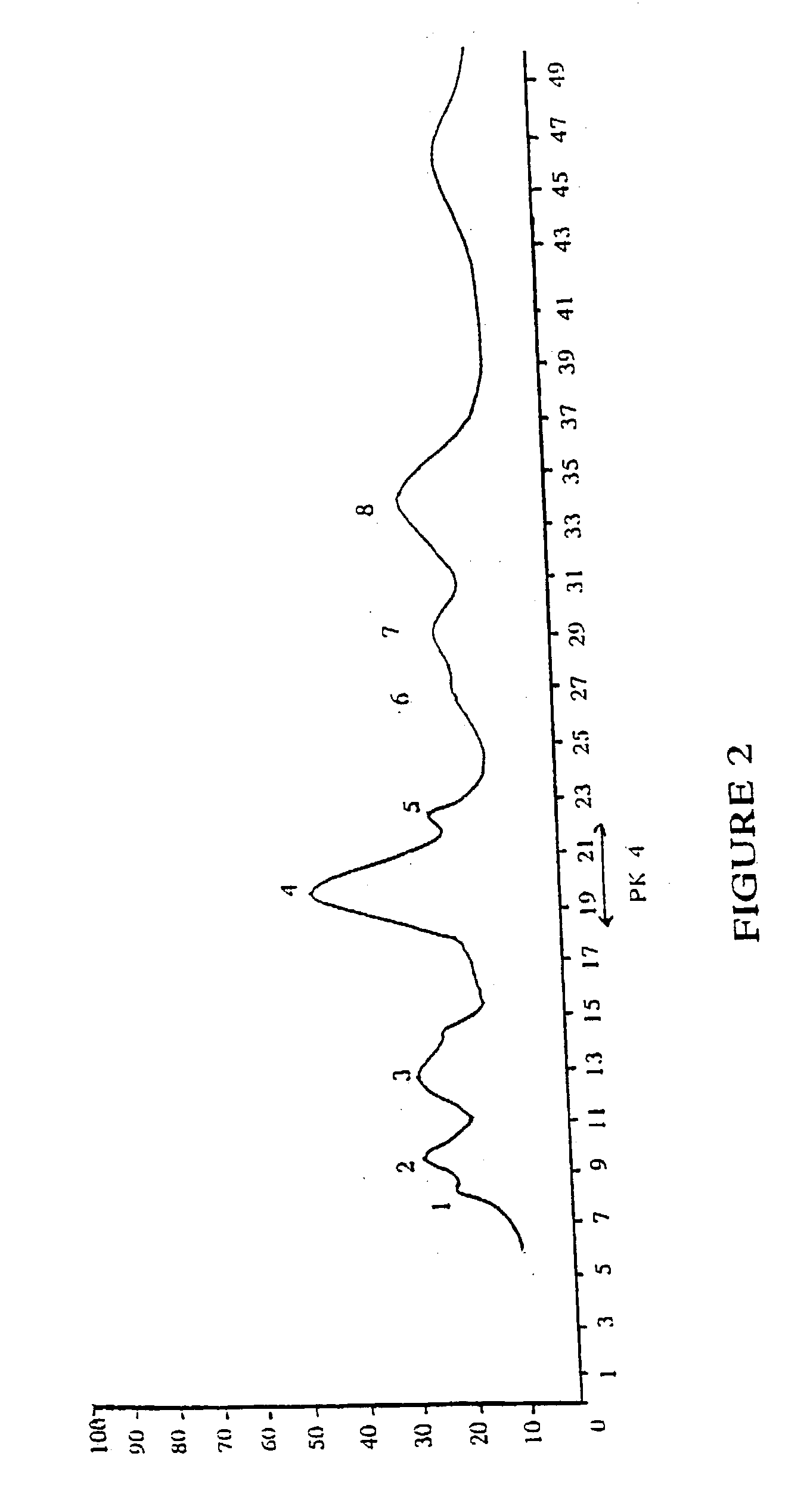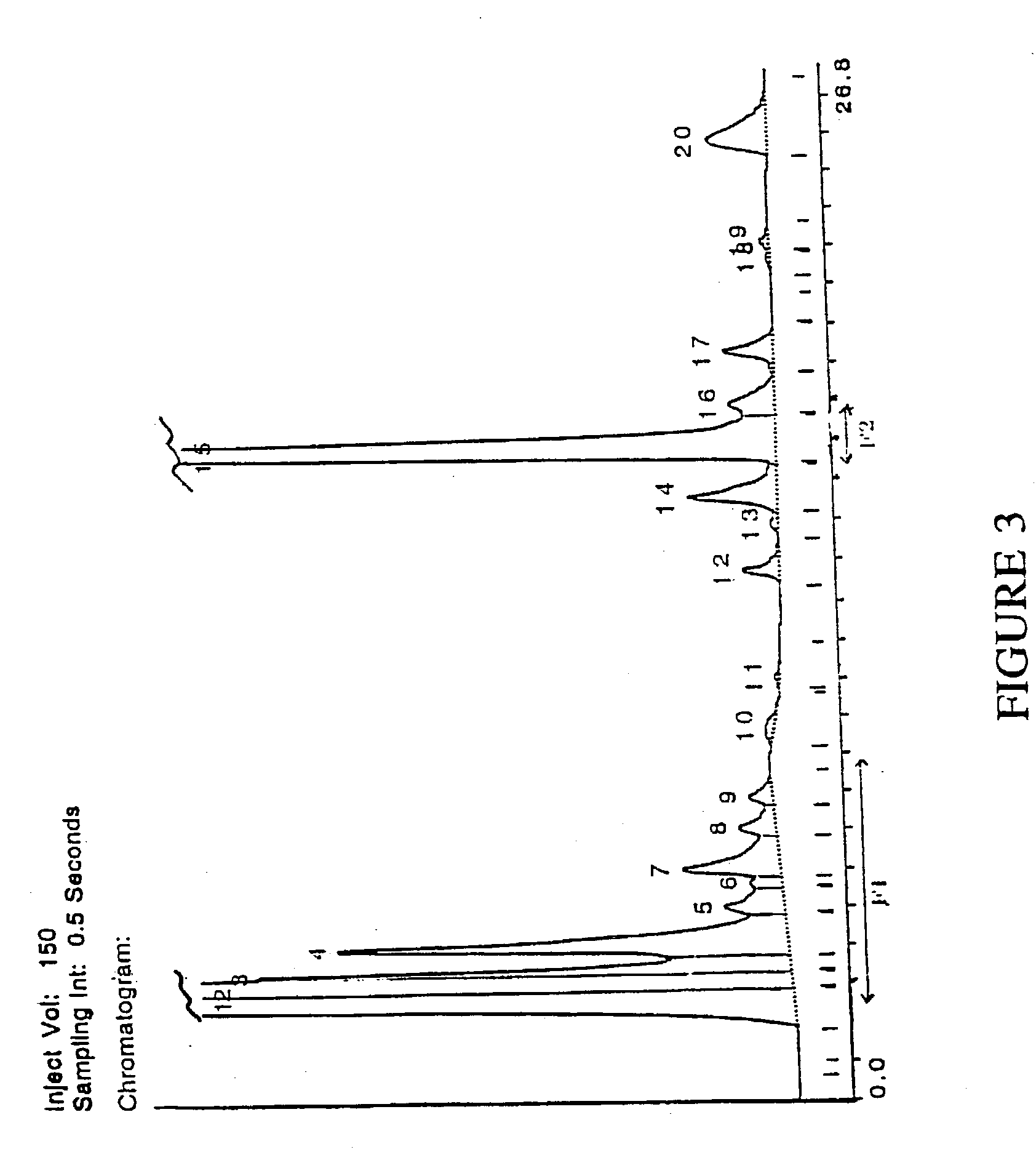Antithrombotic agents
a technology of antithrombotic agents and antithrombotic agents, which is applied in the directions of magnoliophyta medical ingredients, plant ingredients, biocide, etc., can solve the problems of common adverse effects and inacceptable to patients
- Summary
- Abstract
- Description
- Claims
- Application Information
AI Technical Summary
Problems solved by technology
Method used
Image
Examples
example 2
[0080] Partial Fractionation of Tomato Extract
[0081] Methods
[0082] Tomato extracts were fractionated according to the general scheme set out in FIG. 1 and the platelet aggregation inhibiting activity measured at various stages. Thus, fresh tomato juice, prepared from 100% fruit, was boiled for 10 minutes and was then centrifuged at 113,000 g for 30 minutes. The platelet aggregation inhibiting activity of the extract is shown in Table 1 above.
[0083] Following centrifugation, a portion of the supernatant extract was subjected to ultrafiltration by passing through an Amicon YM1 filtration membrane with a molecular weight cut-off of 1000, under nitrogen pressure at 4.degree. C. The ultrafiltrate was collected, as was any retained fruit juice remaining above the filter (retentate), and the ultrafiltrate and retentate were then both tested for their activities in inhibiting ADP or collagen induced platelet aggregation. The anti-platelet activities of the ultrafiltrate and retentate were t...
example 3
[0089] Isolation and Identification of Active Anti-Platelet Aggregation Component From Tomato Extract
[0090] Methods
[0091] Tomato extracts were fractionated according to the general scheme set out in FIG. 1 and the platelet aggregation inhibiting activity measured at various stages. Thus, fresh tomato juice, prepared from 100% fruit, was boiled for 10 minutes and was then centrifuged at 113,000 g for 30 minutes.
[0092] Following centrifugation, a portion of the supernatant extract was subjected to ultrafiltration by passing through an Amicon YM1 filtration membrane with a molecular weight cut-off of 1000, under nitrogen pressure at 4.degree. C. The ultrafiltrate, MWCO 1000, was collected and a sample tested for activity in inhibiting ADP or collagen induced platelet aggregation. The ultrafiltrate was freeze dried for further purification.
[0093] The freeze dried sample was suspended in 2 ml water. The anti-platelet aggregation activity of this aqueous phase was compared with 50 .mu.l o...
example 4
[0112] Assay of the Activity of Tomato-Derived Extract in Inhibiting Platelet Aggregation Induced by Agonists or After the Addition of Arachidonic Acid
[0113] It is known that following injury, platelets adhere to the damaged vascular endothelium thereby facilitating further platelets to stick to one another, aggregate, become activated and form a platelet plug. Platelet aggregation is mediated via factors which are produced at the site of injury and react with receptors on the platelet surface. Some of these factors for example ADP, serotonin and thromboxane A.sub.2 are themselves released by activated platelets, producing a positive feedback loop.
[0114] During the process of platelet aggregation and activation, ligands such as ADP, or collagen in low doses, bind to specific receptors. This leads to activation of membrane phospholipases and the release of arachidonic acid from the platelet membrane phospholipids by the activity of the enzyme phospholipase A2. A proportion of arachid...
PUM
 Login to View More
Login to View More Abstract
Description
Claims
Application Information
 Login to View More
Login to View More - R&D
- Intellectual Property
- Life Sciences
- Materials
- Tech Scout
- Unparalleled Data Quality
- Higher Quality Content
- 60% Fewer Hallucinations
Browse by: Latest US Patents, China's latest patents, Technical Efficacy Thesaurus, Application Domain, Technology Topic, Popular Technical Reports.
© 2025 PatSnap. All rights reserved.Legal|Privacy policy|Modern Slavery Act Transparency Statement|Sitemap|About US| Contact US: help@patsnap.com



